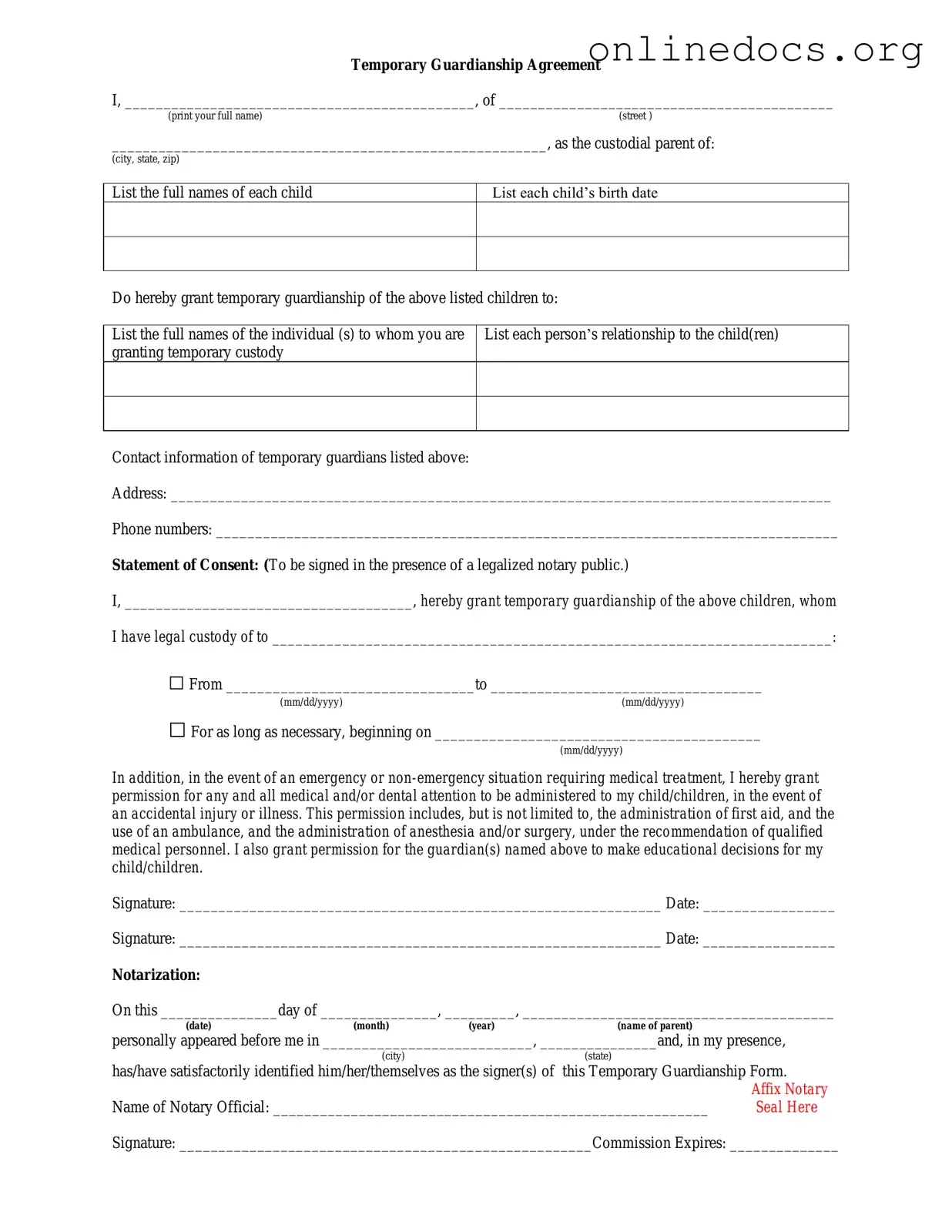The Temporary Custody form shares similarities with the Child Custody Agreement. Both documents serve to outline the arrangements for the care and control of a child. While the Temporary Custody form typically addresses short-term situations, the Child Custody Agreement is often more comprehensive and formalized, detailing long-term custody arrangements. Both documents require the signatures of the involved parties and may need to be filed with a court to ensure enforceability, highlighting their importance in establishing parental rights and responsibilities.
Another document that resembles the Temporary Custody form is the Parenting Plan. This document details how parents will share responsibilities for their child’s upbringing. Like the Temporary Custody form, the Parenting Plan addresses important aspects such as visitation schedules, decision-making authority, and communication methods between parents. Both documents aim to prioritize the child's best interests and can be modified as circumstances change, emphasizing the dynamic nature of parenting arrangements.
The Power of Attorney for Minor Children is also comparable to the Temporary Custody form. This document allows a parent or guardian to grant another adult the authority to make decisions on behalf of their child. While the Temporary Custody form focuses on physical custody, the Power of Attorney can cover medical and educational decisions. Both documents can be crucial in emergency situations, ensuring that a responsible adult can act in the child’s best interests when the parent is unavailable.
Additionally, the Guardianship Petition is similar to the Temporary Custody form in that both involve the care of a child. A Guardianship Petition is often filed when a child needs a permanent guardian due to parental incapacity or absence. While the Temporary Custody form is generally temporary and may be used in less severe situations, both documents require court approval and aim to protect the child's welfare. They establish legal authority and responsibilities, ensuring that the child is cared for appropriately.
The Texas Quitclaim Deed form is a straightforward legal document that facilitates the transfer of property ownership without claims to title security, making it particularly useful in familial transactions. This document allows family members to quickly and efficiently change property titles in a manner that avoids complex legal guarantees. For those interested in utilizing a Quitclaim Deed, resources and templates can be found at legalformspdf.com, providing essential guidance for ensuring proper conveyance of property rights.
Lastly, the Family Law Mediation Agreement bears resemblance to the Temporary Custody form. This document is created during mediation sessions to resolve disputes between parents, including custody issues. Like the Temporary Custody form, it seeks to find solutions that are in the best interest of the child. Both documents require mutual agreement between parents and can help avoid lengthy court battles. They emphasize collaboration and communication, which are essential for effective co-parenting.
